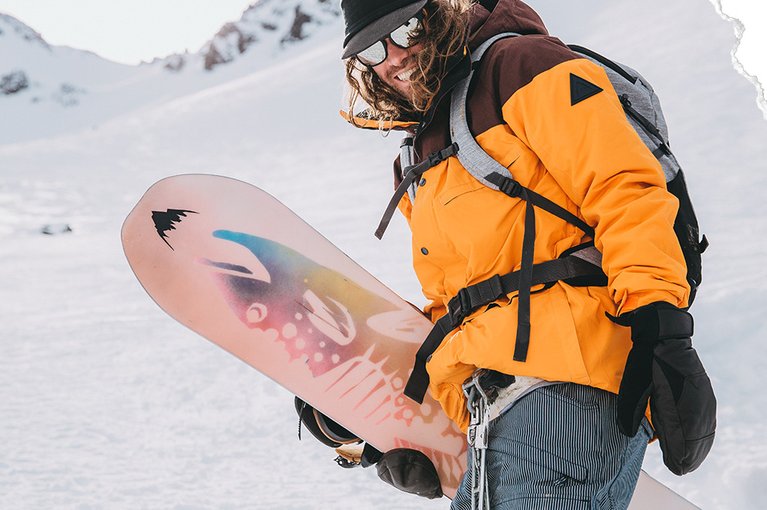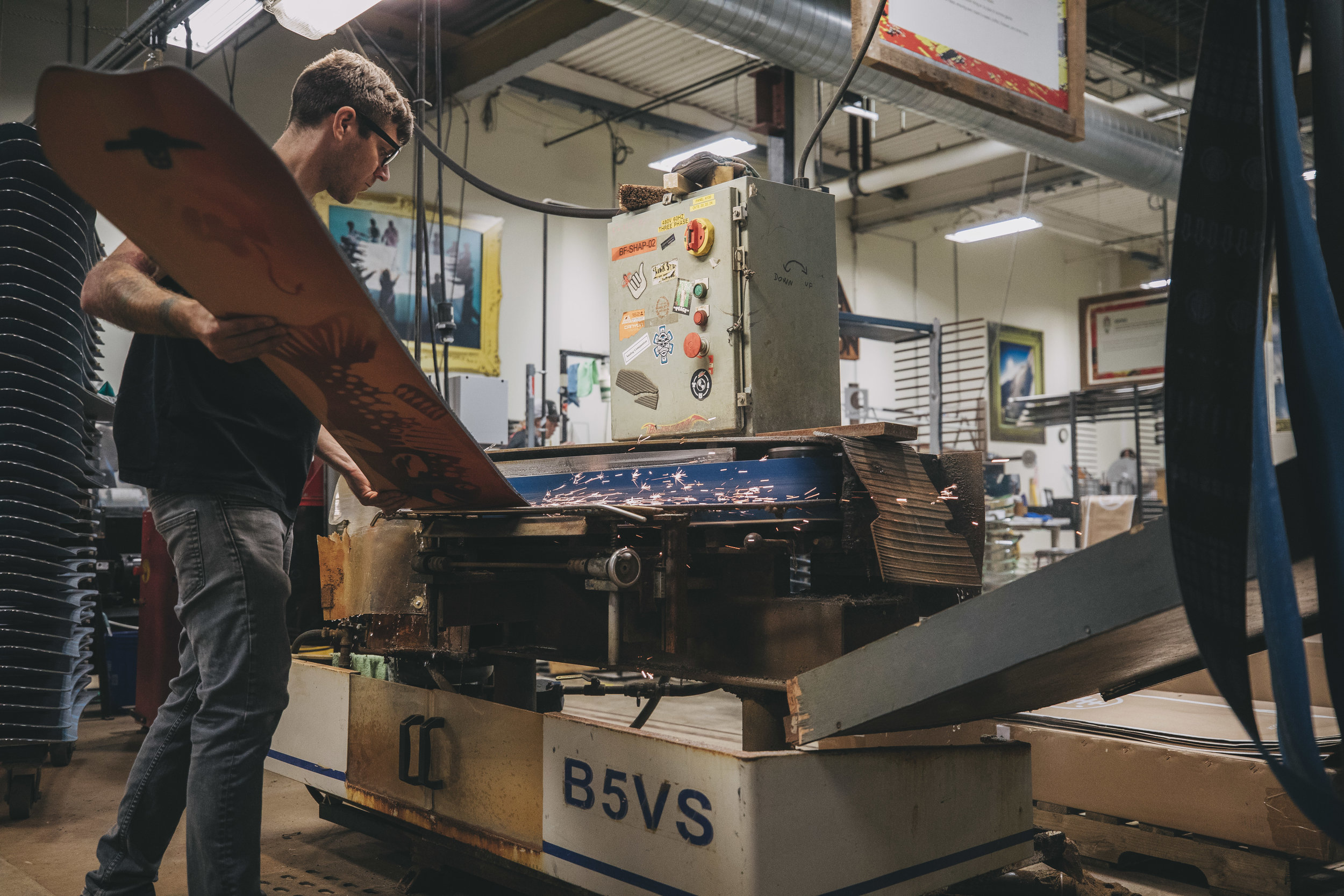Life After Shred
Stay Wild
Burton Goes Beyond the Board
Story By Brooke Jackson // @wandering_trails
Once the raging party of youth fades away, we look into the horizon for what’s next. Our lives roll through various cycles or stages until inevitably, the end hits. What happens after death? Although the answer to human existence isn’t totally clear, Burton has begun to resolve this next phase of life for their snowboards.
Upcycling is the end of a snowboard’s life, or the beginning of a new one, depending on which angle you choose to look at. To understand the whole story, we must go back to the beginning of how the board came to life and follow along its youthful journeys. For about half of Burton’s snowboards, the adventure begins in Austria. For over 30 years Keil, the snowboard-producing factory, has been striving for sustainability in its operations. Functioning like a real-life Santa’s workshop, the Austrian factory runs on 100% renewable energy with most materials being sourced within a 250-mile radius. Additionally, the factory has a closed-loop process in which water used in production is recycled, resulting in a 50% reduction in water usage. The icing on this too-good-to-be-true cookie? The Austrian factory collects snowboard core scraps and uses these to heat the factory and all the presses while also recycling sidewall and base scrap materials. And that’s just the beginning.
A Burton board is no ordinary plank of wood. In fact, nowadays all the boards produced by Burton have 100% FSC™ Certified wood cores. What does FSC Certified mean? FSC Certified wood has been sourced from responsibly managed forests and is verified to “not be harvested: illegally; in violation of traditional and civil rights; in forests where high conservation values are threatened; in forests being converted to plantations or non-forest use; and in forests where genetically modified trees are planted.”
In addition to having a solid source for the boards’ cores, Burton has been producing their entire line-up with Super Sap® Epoxy, a board resin using bio-based materials that reduces the carbon footprint by 50%. Burton has a goal of a 20% total carbon footprint reduction for all of their hard goods by 2020.
Burton’s Spirit Animal & Professional Rider, Danny Davis, explains that “Burton is learning every year how to make a board that will have as minimal of an impact as possible.” When shredding on a Burton snowboard, you can almost feel Mother Nature giving you a high-five.
Legendary skater & urban folk artist, Mark Gonzales created art for these new boards called The Thinkers. Danny worked with Mark on the Thinkers Series. The Free Thinker is “for that softer twin tipped park feel” and the Deep Thinker is “for the freeride, turning, carving, pow-riding approach.” They’re awesome, and since it’s more fun to ride all sorts of shapes it’s a good call to have both in your quiver.
What makes Burton care so deeply about its sustainable board practices? “It’s really a moral imperative to take action” says CEO Donna Carpenter. “Burton’s on a mission to become a sustainable company because that’s really who we are and what we believe in.” According to Donna, Burton considers sustainability in three categories; their people, their playground, and their products. The company has been aiming high and achieving goals quickly over the last few years. In 2011, Burton partnered with Bluesign, the leading environmental standard for textiles that guarantees approved products use only safe chemicals and materials. 85% of Burton’s outerwear, 50% of base layer, and 38% of Burton’s bags are currently Bluesign approved. Burton is committed to 100% by 2020.
“The lifestyle we work so hard for is dependent on cooperation with Mother Nature. That’s why it’s so important for us to hold up our end of the bargain and reduce our footprint so that people can enjoy the mountains for generations to come.” Which brings back the topic of when one life ends, another begins. Burton has a lifetime warranty on a large portion of their softgoods and a 3-year warranty on all of their snowboards. Burton offers repair services to keep their products going for as long as possible. Last year, Burton repaired 19% of all warranty claims and has a goal to double that in three years. Burton also has a recycling program in place that converts all unusable snowboards into various other creative options, from sample holders for local breweries, to shelving units, coasters, and employee name tags. Last year alone, the company saved 60-85% of every board from reaching the landfill. So while every rider mourns the end of a board’s life, find peace knowing that there is life after shred.



